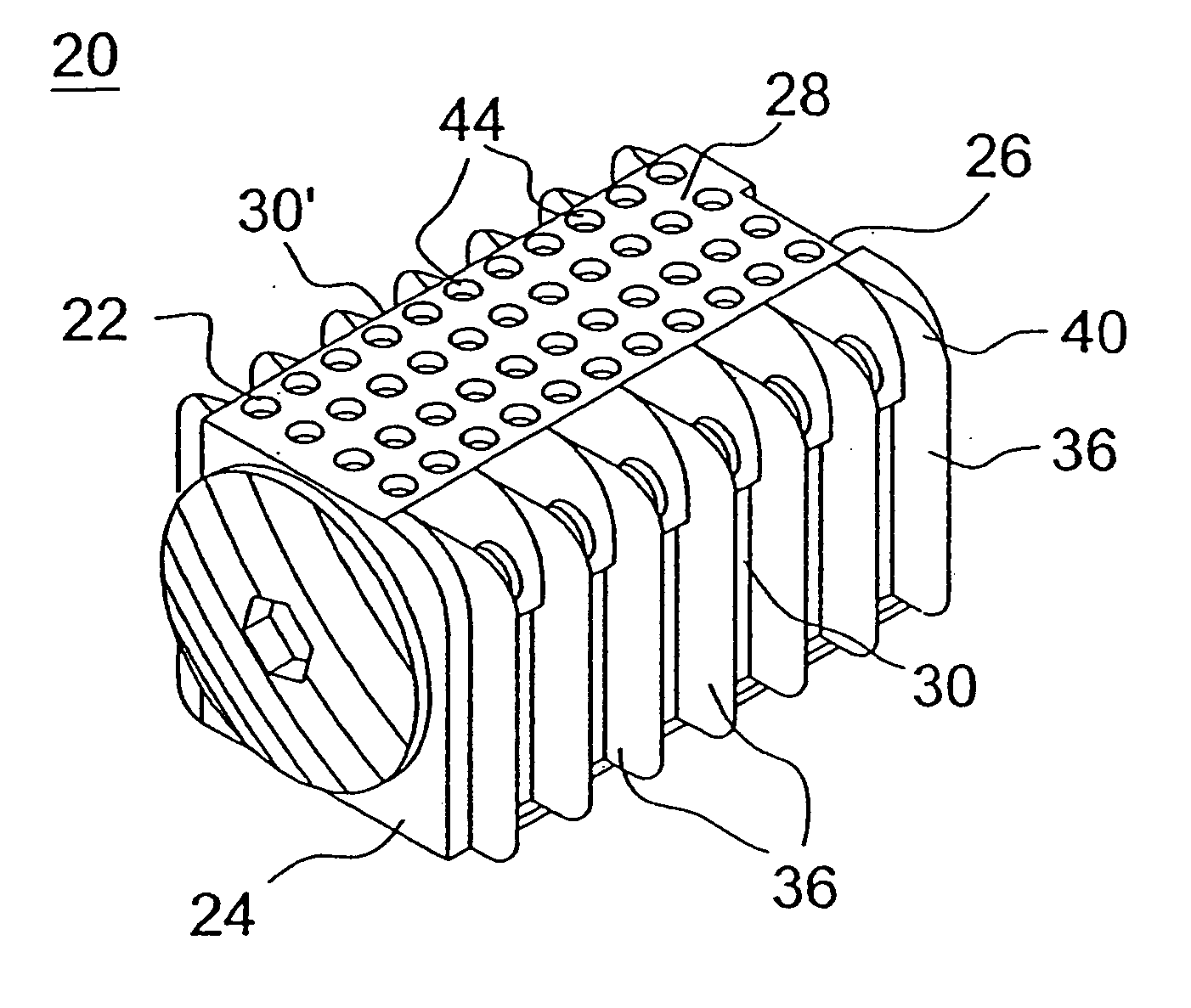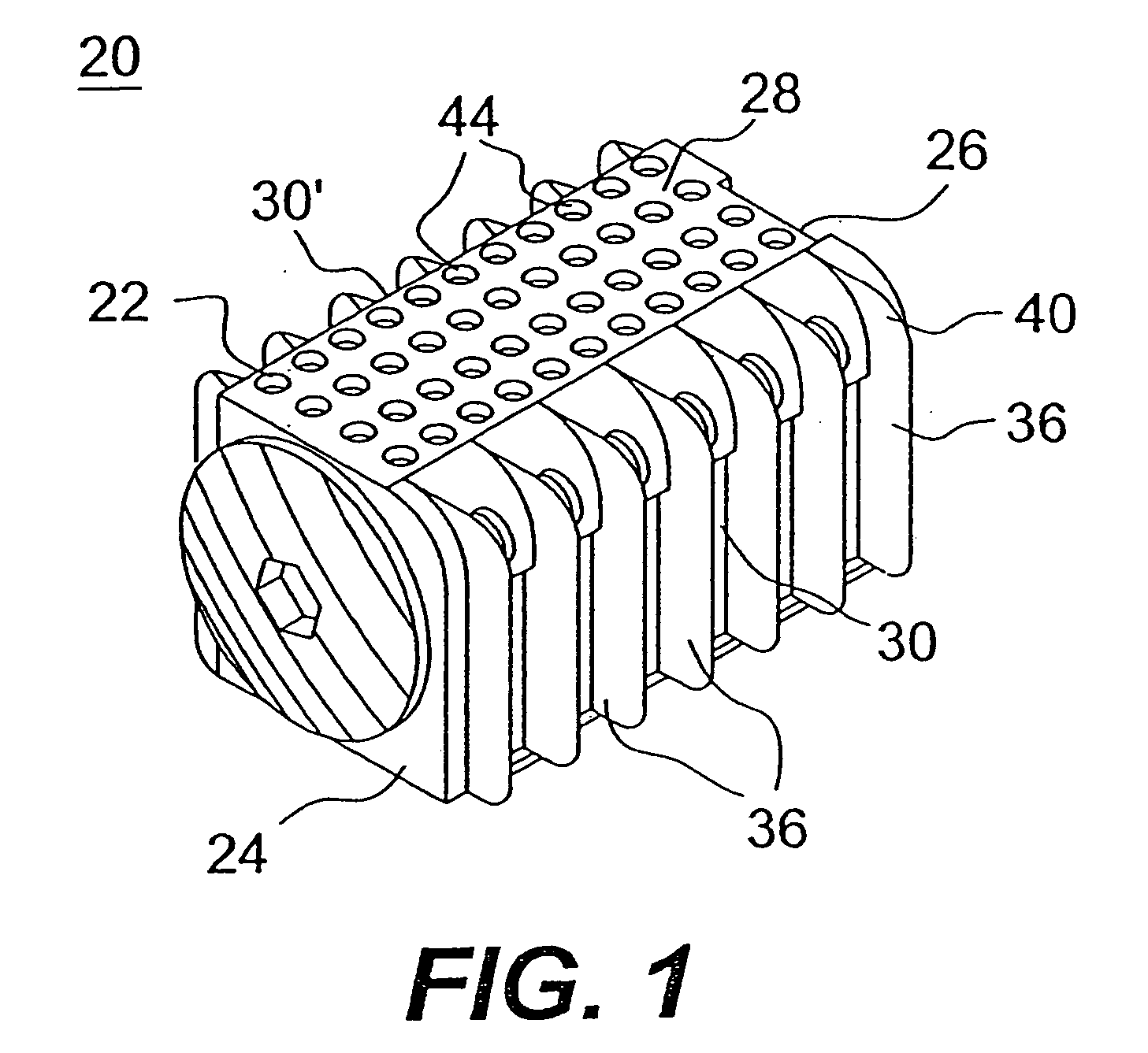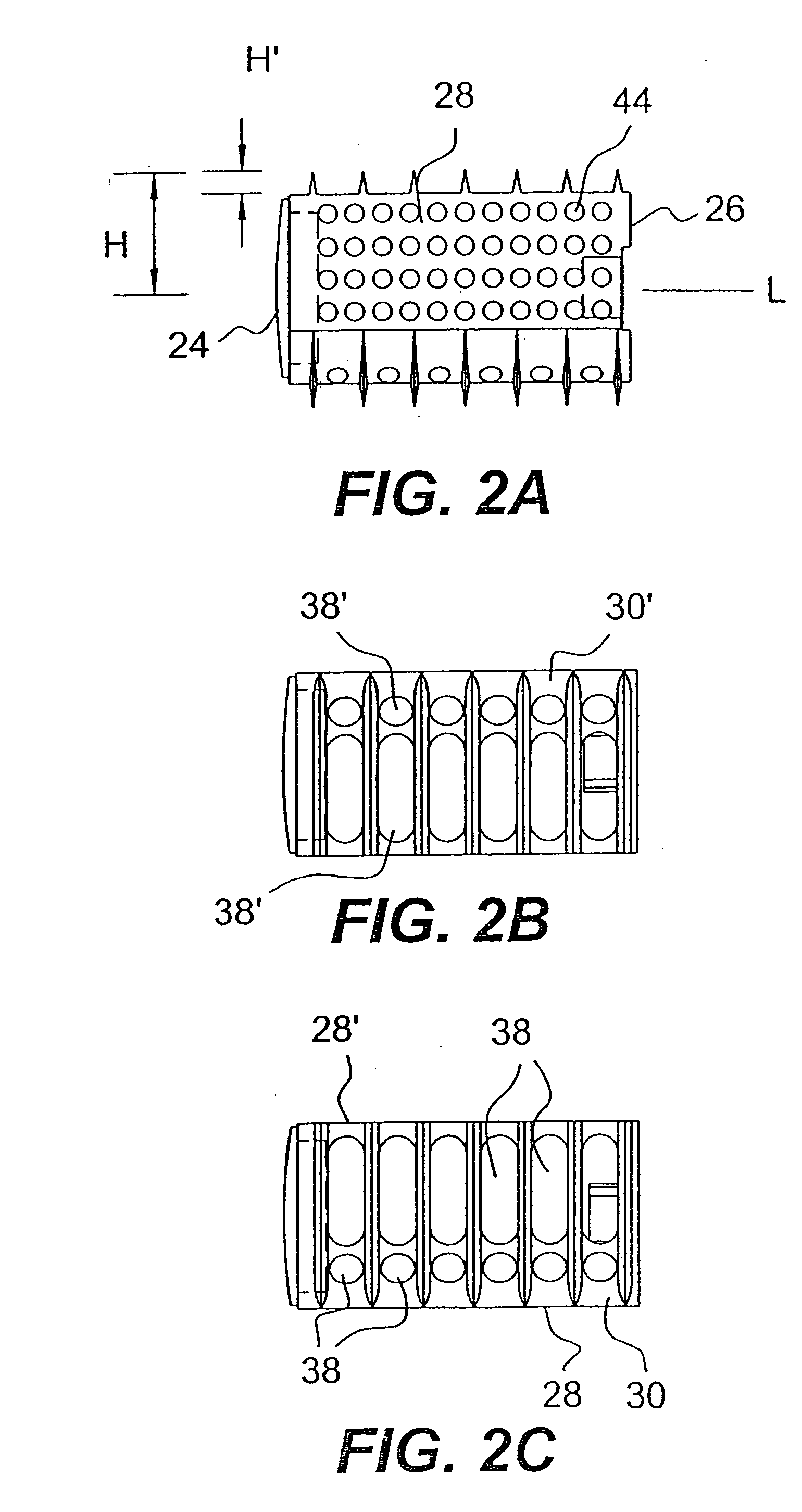Method for inserting a fusion cage having a height substantially the same as the height between adjacent vertebral endplates
a fusion cage and height technology, applied in the field of improved interbody spinal fusion implants, can solve the problems of not offering the advantages associated, not being able to gain the contact between the vertebral bodies and implants needed to achieve fusion, and unwanted overdistraction of the vertebral bodies, so as to facilitate the fusion of the implants
- Summary
- Abstract
- Description
- Claims
- Application Information
AI Technical Summary
Benefits of technology
Problems solved by technology
Method used
Image
Examples
Embodiment Construction
[0061] Reference will now be made in detail to the present preferred embodiments of this invention, examples of which are illustrated in the accompanying drawings. Similar reference numbers such as 28, 28′ will be used throughout the drawings to refer to similar portions of the same implant.
[0062] With reference to FIG. 1 and FIGS. 2A-2F, an interbody spinal fusion implant in accordance with a preferred embodiment of the present invention is indicated generally as 20. The implant has a body 22 having an insertion end 24, a trailing end 26, opposed side walls 28, 28′ and opposed upper and lower walls 30, 30′. Body 22 has a cross section with side walls 28, 28′ intersecting the upper and lower walls 30, 30′ at junctions that are preferably two diametrically opposed corners 32, 32′ and two diametrically opposed arcs 34, 34′. Fin-like projections 36, 36′ extend outwardly from respective ones of upper and lower wails 30, 30′ and are adapted to penetrate the vertebral endplates of the ad...
PUM
| Property | Measurement | Unit |
|---|---|---|
| Height | aaaaa | aaaaa |
Abstract
Description
Claims
Application Information
 Login to View More
Login to View More - R&D
- Intellectual Property
- Life Sciences
- Materials
- Tech Scout
- Unparalleled Data Quality
- Higher Quality Content
- 60% Fewer Hallucinations
Browse by: Latest US Patents, China's latest patents, Technical Efficacy Thesaurus, Application Domain, Technology Topic, Popular Technical Reports.
© 2025 PatSnap. All rights reserved.Legal|Privacy policy|Modern Slavery Act Transparency Statement|Sitemap|About US| Contact US: help@patsnap.com



